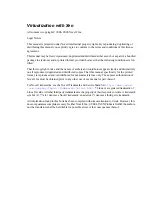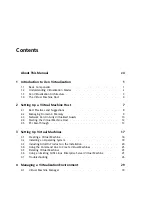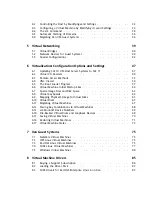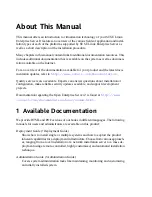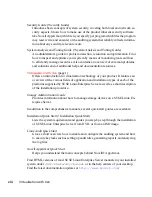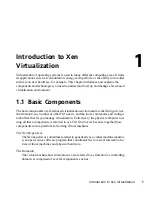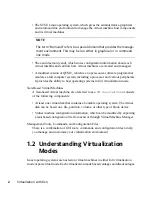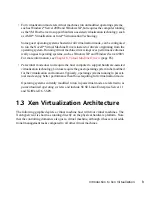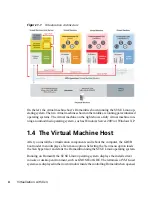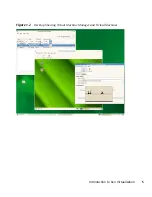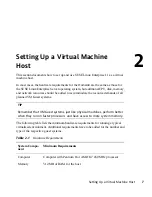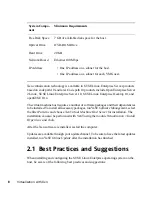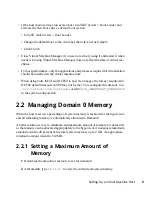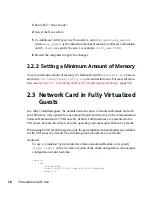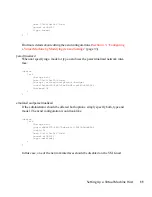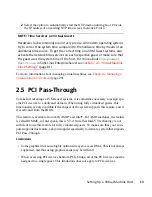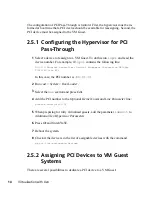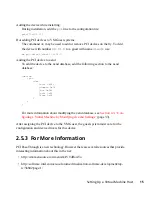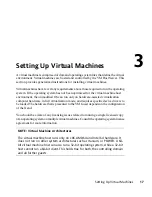
• The SUSE Linux operating system, which gives the administrator a graphical
and command line environment to manage the virtual machine host components
and its virtual machines.
NOTE
The term “Domain0” refers to a special domain that provides the manage-
ment environment. This may be run either in graphical or in command
line mode.
• The xend daemon (xend), which stores configuration information about each
virtual machine and controls how virtual machines are created and managed.
• A modified version of QEMU, which is an open-source software program that
emulates a full computer system, including a processor and various peripherals.
It provides the ability to host operating systems in full virtualization mode.
Xen-Based Virtual Machines
A Xen-based virtual machine, also referred to as a
VM Guest
or
DomU
consists
of the following components:
• At least one virtual disk that contains a bootable operating system. The virtual
disk can be based on a file, partition, volume, or other type of block device.
• Virtual machine configuration information, which can be modified by exporting
a text-based configuration file from xend or through Virtual Machine Manager.
Management Tools, Commands, and Configuration Files
There is a combination of GUI tools, commands, and configuration files to help
you manage and customize your virtualization environment.
1.2 Understanding Virtualization
Modes
Guest operating systems are hosted on virtual machines in either full virtualization
mode or paravirtual mode. Each virtualization mode has advantages and disadvantages.
2
Virtualization with Xen


